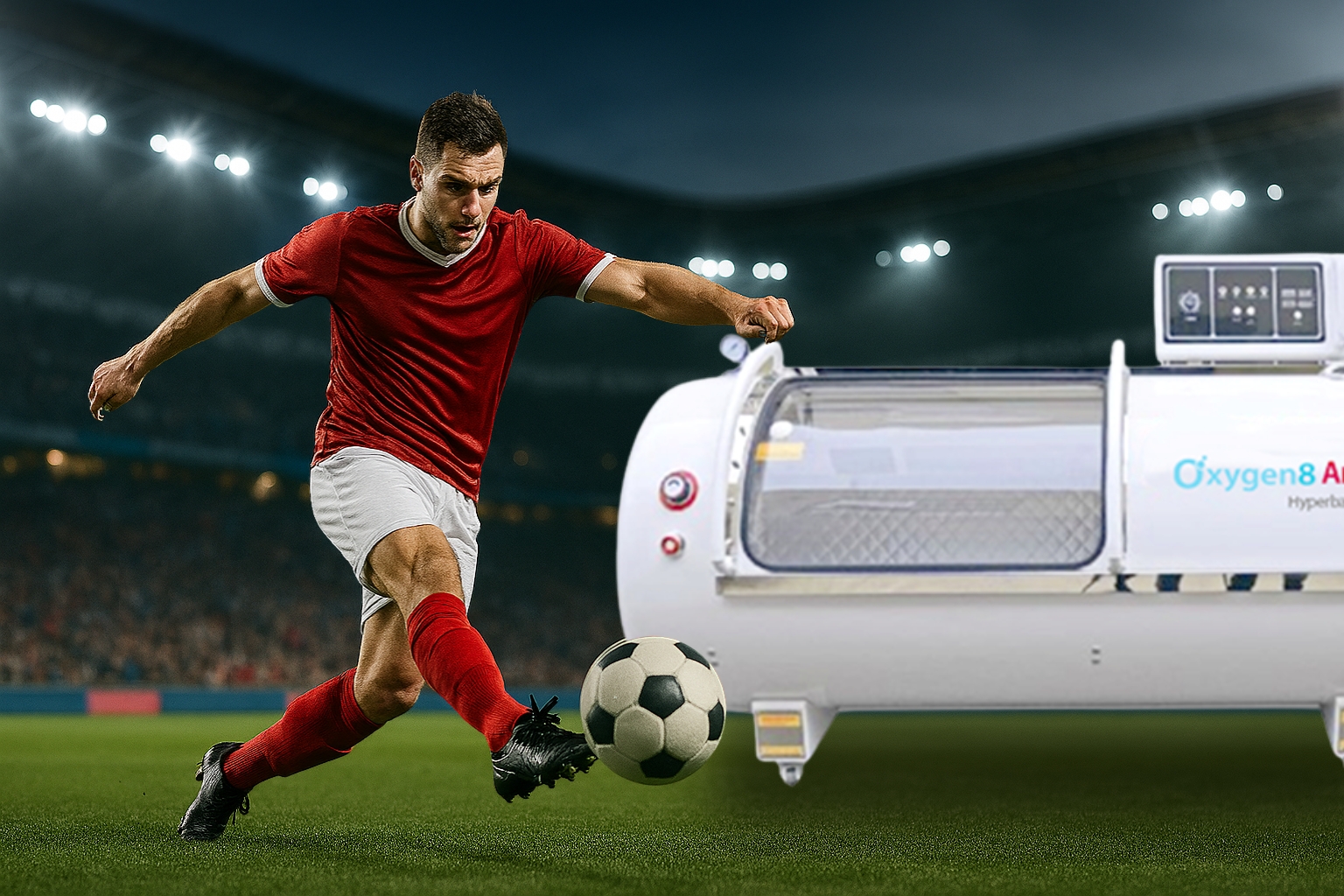
In elite sports, the edge often comes down to milliseconds, micromovements, and muscle recovery.
Faster recovery doesn’t just reduce downtime, it extends careers, prevents re-injury, and optimizes performance.
Increasingly, athletes are turning to Hyperbaric Oxygen Therapy (HBOT) to accelerate this process.
HBOT involves breathing pure oxygen in a pressurized environment.
While originally designed for decompression sickness, it’s now making waves in sports science for its cellular healing potential. And the world’s top performers are paying attention.
Whether you’re a professional athlete, weekend warrior, or dedicated fitness enthusiast, reducing inflammation and enhancing recovery can mean the difference between progress and plateau.
HBOT is one of the few therapies that work at a cellular level to address both.
Inside a hyperbaric chamber, oxygen is delivered at 1.5 to 3 times the normal atmospheric pressure.
This significantly increases the amount of oxygen dissolved in plasma, making it easier for tissues to receive the fuel they need to repair and regenerate.
Physiological benefits for athletes include:
Dr. Jason Sonners, a leading figure in hyperbaric medicine, states: “HBOT helps by improving oxygen delivery to damaged tissues, which is key in high-intensity athletic recovery.”
This isn’t just fringe therapy. Multiple elite athletes across disciplines swear by it:
Recent studies are validating what athletes have known anecdotally for years:
In addition, studies suggest HBOT enhances nitric oxide production, which improves circulation and further supports the body’s healing response. This has significant implications not just for injury recovery, but also for endurance and strength gains.
These mechanisms may explain why athletes report faster bounce-back times and reduced soreness after sessions.
Athletes use HBOT for sports injuries, including:
Emerging evidence also suggests that HBOT can support recovery in more complex overuse injuries, like runner’s knee and rotator cuff inflammation.
While HBOT is not a standalone cure, it acts as a powerful complement to physiotherapy, cryotherapy, and rest.
Some athletes use HBOT proactively—not just for recovery, but for performance enhancement and long-term health. Benefits include:
Longevity-focused athletes like Bryan Johnson claim HBOT is part of their cellular age-reversal protocols.
Some clinics offer athlete-specific packages, combining HBOT with physical therapy or cryo recovery. Home-use chambers are increasingly affordable, though clinical supervision is still advised.
Many athletic departments are investing in HBOT infrastructure, viewing it as a long-term investment in player health and performance.
While generally considered safe, misuse or unsupervised sessions could lead to complications, especially if pre-existing conditions exist. An individualized approach remains essential.
From elite footballers to Olympic legends, HBOT is becoming a go-to recovery tool in modern sports medicine. While it’s not a silver bullet, evidence shows that when combined with traditional therapies, it can cut downtime, extend careers, and optimize performance.
In the words of one sports recovery physician: “Oxygen is the most underutilized performance enhancer available to athletes today—because it’s not about breathing more, it’s about absorbing better.”
As research expands and more athletes share success stories, HBOT may soon be a fixture in every top-tier training regimen.
Yes. It’s legal and widely used, though not approved as a performance enhancer by most regulatory bodies.
Some report benefits within 3–5 sessions, especially in reduced soreness and improved energy.
Absolutely—but it should be done under supervision, and not as a substitute for core recovery methods like rest and nutrition.
Yes: cryotherapy, massage, PEMF therapy, cold plunges—but HBOT is one of the few that work at the cellular oxygenation level.
Frequency varies, but many follow cycles of 10–20 sessions, particularly after injury or peak exertion periods.
Yes. Many users report deeper sleep, faster recovery, and improved cognitive focus following regular sessions.
Medical Disclaimer: This article is for informational purposes only and does not constitute medical advice. Athletes should consult certified sports physicians or hyperbaric medicine experts before starting any new treatment.